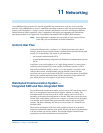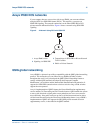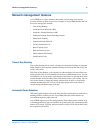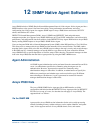
Network interfaces and equipment 11
Overview for Avaya IP600 Internet Protocol Communications Server
555-233-001 — Issue 5 — November 2000
90
Network interfaces and equipment
Avaya IP600 supports a variety of interfaces to voice and data networks. Trunks
supply links between Avaya IP600, the public network, and other switches. DS1
interfaces offer high-speed digital connectivity between switches.
Trunk group circuits
Trunks provide the communications links between Avaya IP600 and other switches,
including central office switches and other premises switches. Trunks that perform
the same function are grouped together and administered as trunk groups. Trunks
interface with Avaya IP600 via port circuit packs. Avaya IP600’s trunk group circuit
types include the following:
Local exchange trunks Local exchange trunks connect Avaya IP600 to a central office. The following are
some of the types available:
• Central office trunks, which connect Avaya IP600 to the local central office for
incoming and outgoing calls
• Foreign exchange trunks, which connect Avaya IP600 to a central office other
than the local one
• Wide Area Telecommunications Service trunks, which allow you to place long-
distance outgoing voice-grade calls to telephones in defined service areas, priced
according to distance in the service area, length of the call, time of day, and the
day of the week
• 800-service trunks, which let your business pay the charges for inbound long-
distance calls so that callers can reach you toll-free
• Direct Inward Dialing (DID) trunks, which connect Avaya IP600 to the local
central office for incoming calls dialed directly to stations without attendant
assistance
• Digital Service 1 (DS1) trunks, which can be used to provide ISDN Primary Rate
Interface local exchange trunk services. DS1 by itself can be used to provide local
exchange trunk services
Tie trunks Tie trunks carry communications between Avaya IP600 and other switches in a
private network. Several types of trunks can be used, depending on the type of private
network you establish.
Auxiliary trunks Auxiliary trunks connect devices with the switch. Some of the features that are
supported with this type of trunk are recorded announcements, telephone dictation
service, malicious call trace, and loudspeaker paging.


















